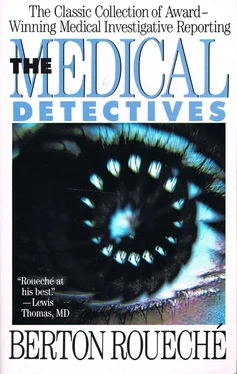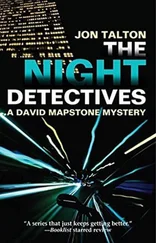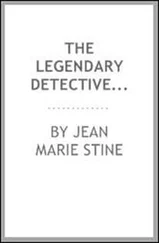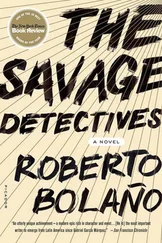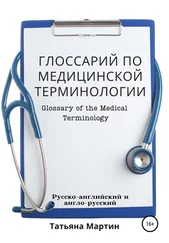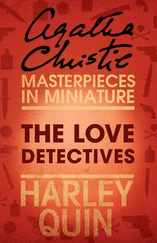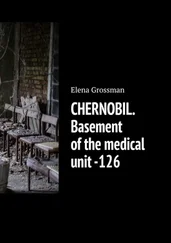"She and Dr. Enriquez and I talked for a moment at the entrance to the building. The building was standard design for contemporary Florida schools. The entrance hall ran back to a cross corridor that led to the classrooms. The other school facilities were off the entrance hall. The offices, the clinic, and the library were on the right-hand side. On the left were the teachers' lounge, the cafetorium, and the kitchen. A cafetorium is a room that doubles as an auditorium and a cafeteria. The secretary gave us all the information she had. It was her understanding that there had been a gas leak of some kind. That was what she had heard. But she had seen the first victim with her own eyes. The first victim was an eleven-year-old girl in the fifth grade. I'll call her Sandy. Sandy was a member of a chorus of around a hundred and seventy-five fourth, fifth, and sixth graders who had assembled with the music teacher in the cafetorium at nine o'clock to rehearse for a schoolwide musical program. Halfway through the hour—this, I should say, was constructed later—she began to feel sick. She slipped out of the cafetorium. She was seen by some of the students but not by the teacher. She went across the hall to the clinic and went in and collapsed on a couch. The clinic start was off duty at the moment, but the secretary happened to catch sight of her, and went in and found her lying there unconscious She tried to revive her—with smelling salts!"
"My mother used to carry smelling salts," I said.
"Yes. It was rather sweet, I thought. Well, anyway, Sandy didn't respond, and that very naturally alarmed the secretary. And so she very naturally called for help. She called the fire department. Sandy was still unconscious when the fire-rescue squad arrived, and they didn't waste any time. They put her on a stretcher and took her off to the hospital—North Shore Hospital. Then another child got sick, and another, and another. That's when our nursing unit was called. Seven children were sick enough to also be rushed to the hospital after Sandy went. Around twenty-five others were sick enough to be sent home. The school called their parents, and they came and picked them up. Another forty or so were being treated here at the school. They were in the cafetorium." Dr. Nitzkin raised his eyebrows. "That's what the secretary said—in the cafetorium !
Myriam Enriquez and I exchanged a look. Wasn't the cafetorium where Sandy became ill, I asked. Where the poison gas must have first appeared? The secretary looked baffled. She said she didn't know anything about that. She had first seen Sandy in the clinic. All she knew was that the sick children still at the school were being treated in the cafetorium.
"We left the secretary and went on into the school. I think we were both in the same uncomfortable state of mind. The situation still felt the way it had to Martha Sonderegger. It felt strange. There was also a strange smell in the place. We smelled it the minute we stepped into the hall. It wasn't unpleasant—just strong. We couldn't place it. Well, that was what Carl DiSalvo was here for. He would work it out. I hadn't seen him, but I knew he was somewhere in the building. We went on to the cafetorium. There was the sound of many voices. It sounded like a mammoth cocktail party. We went into a big room full of people, full of uniforms.
Nurses. Police. Fire-rescue workers, in their white coveralls. And u lot of other people. The sick children were stretched out here and there. I could still smell the strange smell, but it was fainter—much fainter—here. Dr. Enriquez and I separated. She had her clinical tests to make. I was the epidemiologist. I walked around the room and looked, and talked to some of the children. The clinical picture was rather curious. There was an unusual variety of signs and symptoms. Headache. Dizziness. Chills. Abdominal pain. Shortness of breath. Weakness. I noticed two kids who were obviously hyperventilating, breathing very fast and very deep. That was an interesting symptom.
"I stood and thought for a moment. I began to get a glimmer of a glimmer. I went across the hall to an office and found a telephone and called the emergency room at North Shore Hospital and talked to the doctor on duty there. He knew about the children from the Bay Harbor school. He said they were in satisfactory condition. He said they seemed to be feeling better. He said he didn't have results on all of the lab tests yet, but the findings he had seen seemed to be essentially normal. My glimmer still glimmered. I started back to the cafetorium, and ran into DiSalvo. He had been looking for me. He had made a quick inspection of the physical environment of the building and he hadn't turned up any tangible factors—any gases or fumes or allergens—that could have caused any kind of illness. I mentioned the funny smell. He laughed. He had checked it out. It came from an adhesive used to secure a new carpet in the library. The adhesive was in no way toxic. Anyway, the carpet had been laid a good two weeks earlier. DiSalvo was satisfied with his preliminary findings, but he was going to settle down and do the usual full-scale comprehensive survey. I was satisfied, too. I was more than willing to drop the idea of a toxic gas. I had never really believed it. And I was also satisfied that we could rule out a bacterial or viral cause of the trouble. The incubation period—the interval between exposure and the onset of illness—was much too short. And the symptoms were also wrong.
"I left DiSalvo and went back to the cafetorium, and I remember looking at my watch. It was eleven-thirty. I had been at the school a scant twenty minutes. It felt like forever. But then, all of a sudden, things began to move. I entered the cafetorium this time—by a side door at the kitchen end of the room, and there was a woman standing there—one of the kitchen staff. The dietitian, maybe. An authoritative woman, anyway. She called me over. And—Was it some look in my eye? I don't know. But she said, 'Aren't you a doctor?' I said I was. 'Well,' she said, 'then why don't you do something? Why don't you straighten out this mess? This is all perfectly ridiculous. You know as well as I do that there's nothing the matter with these kids. Get them up on their feet! Get them out of here! They're in the way! I have to start setting up for lunch.'
"I must have stood and gaped at her. I'd had a funny feeling—a deep-down, gut suspicion—from the very beginning of the case that there was something not quite right about it. I'd got a glimmer when I saw those two kids hyperventilating. Hyperventilation is a classic psychosomatic anxiety reaction. And now the truth finally hit me. A memory rose up in my mind. I knew what I was seeing here. Something very like this had happened just a year before in an elementary school in a little town in Alabama—Berry, Alabama. The dietician was right. But she was also wrong. She was right about there being nothing fundamentally the matter with the kids. But she was wrong in thinking that all those aches and pains and chills and nausea were illusory. They were real, all right. And this was a real epidemic. It was an epidemic of mass hysteria."
The word "hysteria" derives from the Greek hystera , meaning "uterus." This curious name reflects Hippocrates' notion of the point of origin of the disturbance. "For hysterical maidens," he wrote, "I prescribe marriage, for they are cured by pregnancy." His view prevailed in medicine until well into the nineteenth century, and is perhaps still prevalent in the lingering lay association of women and hysteria. The term "mass hysteria" is also a lay survival. The phenomenon is now preferably known to science as "collective obsessional behavior." Collective obsessions occur throughout the animal world (the cattle stampede, the flocking of starlings on the courthouse roo0, and the human animal, despite—or maybe because of—its more finely tuned mentality, seems exquisitely susceptible to them. Manifestations among the human race take many forms. These range in social seriousness from the transient tyranny of the fad (skate-boards, Farrah Fawcett-Majors, jogging, Perrier with a twist) and the eager lockstep of fashion (blue jeans, hoopskirts, stomping boots, white kid gloves, the beard, the wig) to the delirium of the My Lai massacre and the frenzy of the race riot and the witch hunt. Epidemic obsessional behavior differs from its companion compulsions in one prominent respect. It is not, as Alan C. Kerckhoff and Kurt W. Back, both of Duke University, have noted in "The June Bug: A Study of Hysterical Contagion" (1968), "an active response to some element in the situation; it is a passive experience. The actors do not do something so much as something happens to them."
Читать дальше
